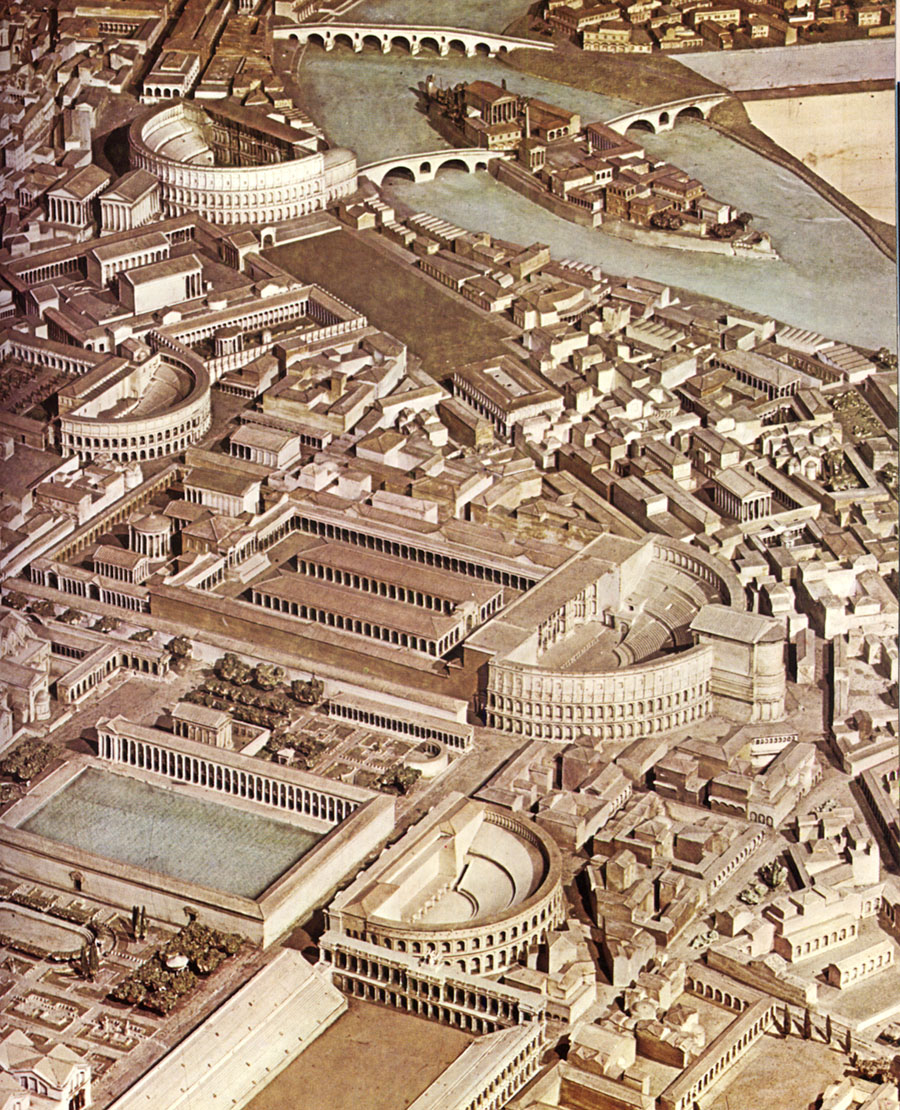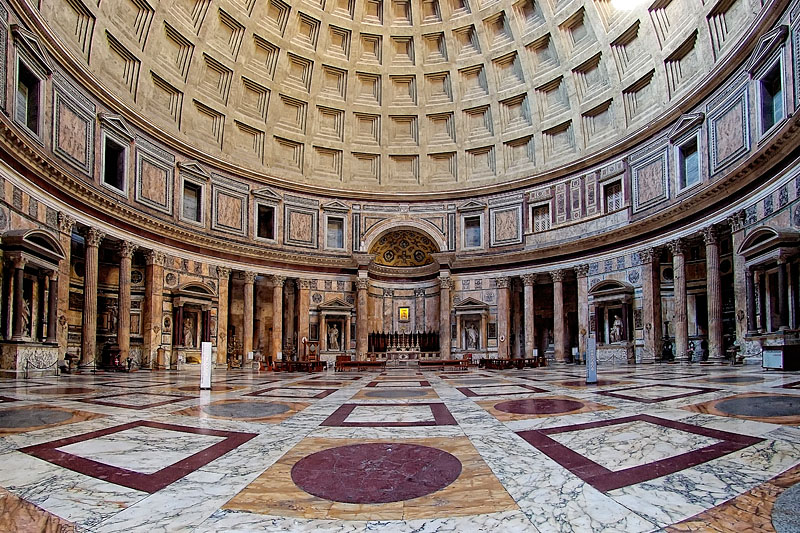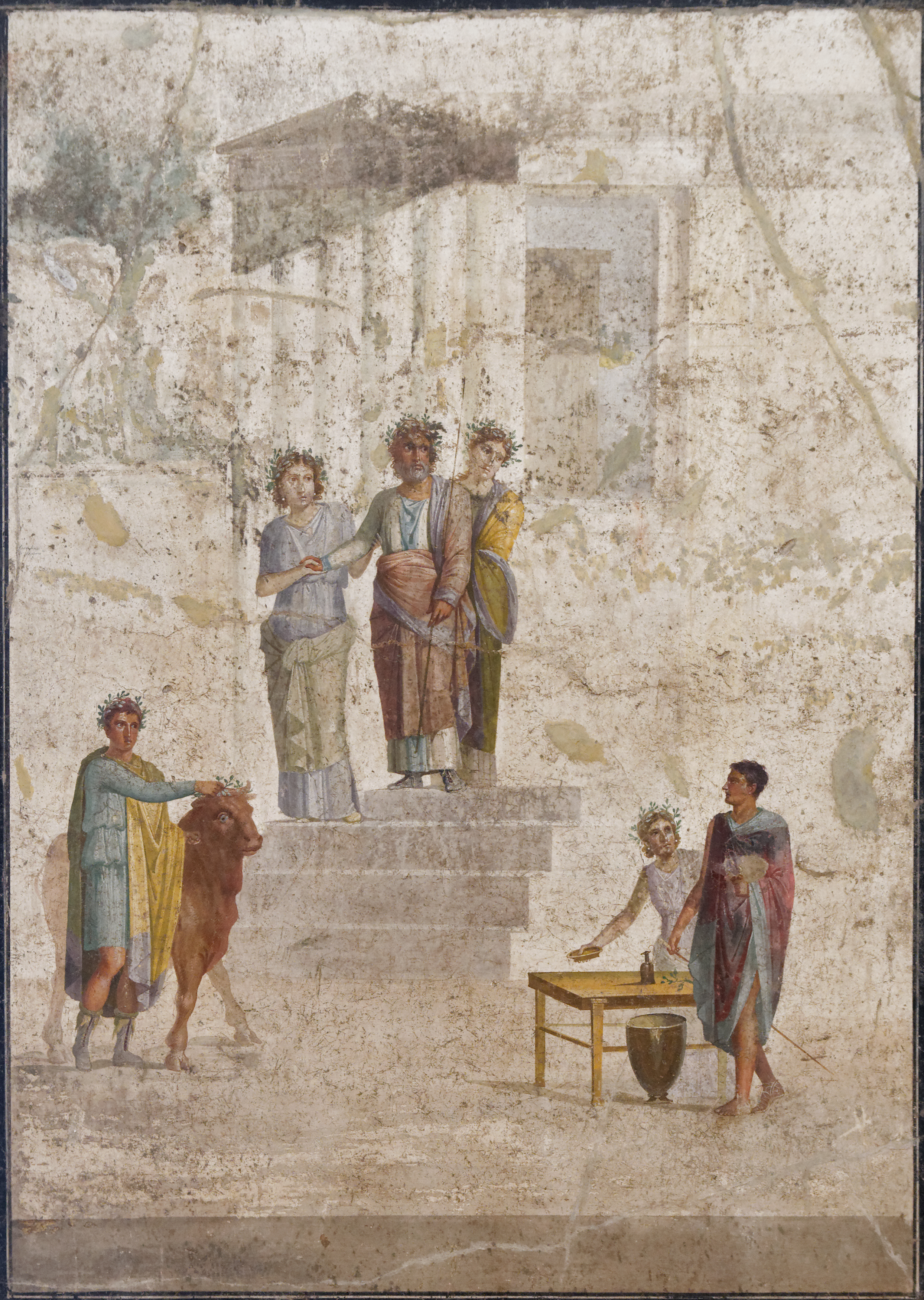|
Saepta Julia
The Saepta Julia was a building in the Campus Martius of Rome, where citizens gathered to cast votes. The building was conceived by Julius Caesar and dedicated by Marcus Vipsanius Agrippa in 26 BC. The building replaced an older structure, called the Ovile, built as a place for the '' comitia tributa'' to gather to cast votes.Simon Hornblower and Antony Spawforth (eds.), The Oxford Classical Dictionary (1996) — ; available online for a fee The Saepta Julia can be seen on the '' Forma Urbis Romae'', a map of the city of Rome as it existed in the early 3rd century AD. Part of the original wall of the Saepta Julia can still be seen right next to the Pantheon. History The conception of the Saepta Julia, which also goes by Saepta or Porticus Saeptorum, began during the reign of Julius Caesar. It took the form of a quadriporticus, an architectural feature made popular by Caesar. After Caesar's assassination in 44 BC, work continued on projects that Caesar had set into motion. Mar ... [...More Info...] [...Related Items...] OR: [Wikipedia] [Google] [Baidu] |
Campus Martius
The Campus Martius (Latin for 'Field of Mars'; Italian: ''Campo Marzio'') was a publicly owned area of ancient Rome about in extent. In the Middle Ages, it was the most populous area of Rome. The IV rione of Rome, Campo Marzio, which covers a smaller section of the original area, bears the same name. Antiquity According to Rome's foundation myth, prior to the founding of the city, Rhea Silvia had her twin sons, Romulus and Remus, taken by the King of Alba Longa. The boys were later discarded in the swelling Tiber River, which would later run along the Campus' western boundary. Washing ashore further downriver, the brothers would return decades later to found a new city. Romulus, who became Rome's sole king (after killing his brother Remus), ruled for many years until sometime in the seventh century B.C. As he came to the end of his life, a storm cloud descended upon the center of the open field outside the city's pomerium in order to lift the elderly king to the afterlife.J ... [...More Info...] [...Related Items...] OR: [Wikipedia] [Google] [Baidu] |
Doria Pamphilj Gallery
The Galleria Doria Pamphilj (often Doria Pamphilj Gallery or Doria Pamphili Gallery in English) is a large private art collection housed in the Palazzo Doria Pamphilj in Rome, Italy, between Via del Corso and Via della Gatta. The principal entrance is on the Via del Corso. (Until recently, the entrance to the gallery was from the Piazza del Collegio Romano.) The palace façade on Via del Corso is adjacent to a church, Santa Maria in Via Lata. Like the palace, it is still privately owned by the princely Roman family Doria-Pamphili-Landi, Doria Pamphili. Tours of the state rooms often culminate in concerts of Baroque and Renaissance music, paying tribute to the setting and the masterpieces it contains. With some earlier and later exceptions, the bulk of the collection consists of works from the 16th and 17th centuries, a high proportion of them of exceptional quality. Collection The large collection of paintings, furniture and statuary has been assembled since the 16th century ... [...More Info...] [...Related Items...] OR: [Wikipedia] [Google] [Baidu] |
Ancient Roman Buildings And Structures In Rome
Ancient history is a time period from the History of writing, beginning of writing and recorded human history through late antiquity. The span of recorded history is roughly 5,000 years, beginning with the development of Sumerian language, Sumerian cuneiform script. Ancient history covers all continents inhabited by humans in the period 3000 BCAD 500, ending with the Early Muslim conquests, expansion of Islam in late antiquity. The three-age system periodises ancient history into the Stone Age, the Bronze Age, and the Iron Age, with recorded history generally considered to begin with the Bronze Age. The start and end of the three ages vary between world regions. In many regions the Bronze Age is generally considered to begin a few centuries prior to 3000 BC, while the end of the Iron Age varies from the early first millennium BC in some regions to the late first millennium AD in others. During the time period of ancient history, the world population was Exponential growth, e ... [...More Info...] [...Related Items...] OR: [Wikipedia] [Google] [Baidu] |
20s BC Establishments In The Roman Empire
S, or s, is the nineteenth Letter (alphabet), letter of the Latin alphabet, used in the English alphabet, the alphabets of other western Languages of Europe, European languages and other latin alphabets worldwide. Its name in English is English alphabet#Letter names, ''ess'' (pronounced ), plural ''esses''. History Northwest Semitic abjad, Northwest Semitic Shin (letter), šîn represented a voiceless postalveolar fricative (as in 'ip'). It originated most likely as a pictogram of a tooth () and represented the phoneme via the acrophonic principle. Ancient Greek did not have a "sh" phoneme, so the derived Greek letter Sigma (letter), Sigma () came to represent the voiceless alveolar sibilant . While the letter shape Σ continues Phoenician ''šîn'', its name ''sigma'' is taken from the letter ''Samekh'', while the shape and position of ''samekh'' but name of ''šîn'' is continued in the ''Ξ, xi''. Within Greek, the name of ''sigma'' was influenced by its associatio ... [...More Info...] [...Related Items...] OR: [Wikipedia] [Google] [Baidu] |
26 BC
__NOTOC__ Year 26 BC was either a common year starting on Tuesday or Wednesday or a leap year starting on Monday, Tuesday or Wednesday of the Julian calendar (the sources differ, see leap year error for further information) and a common year starting on Monday of the Proleptic Julian calendar. At the time, it was known as the Year of the Consulship of Augustus and Taurus (or, less frequently, year 728 ''Ab urbe condita''). The denomination 26 BC for this year has been used since the early medieval period, when the Anno Domini calendar era became the prevalent method in Europe for naming years. Events By place Roman Empire * Imperator Caesar Augustus becomes Roman Consul for the eighth time. His partner Titus Statilius Taurus becomes Consul for the second time and refounds the old Contestanian Iberian capital of Ilici (Elche), known since then as "Colonia Iulia Ilici Augusta". * Cleopatra Selene marries Juba II of Numidia, and as a wedding present Augustus makes her t ... [...More Info...] [...Related Items...] OR: [Wikipedia] [Google] [Baidu] |
Naumachia
A naumachia (in Latin , from the Ancient Greek /, literally "naval combat") was a mock naval battle staged as mass entertainment by the Ancient Romans. The staging would typically occur in a specially-dug basin, also known as a naumachia. Early The first known was given by Julius Caesar in Rome in 46 BC on occasion of his quadruple triumph. After having a basin dug near the Tiber, capable of holding actual biremes, triremes and quinqueremes, he made 2,000 combatants and 4,000 rowers, all prisoners of war, fight. In 2 BC for the inauguration of the Temple of Mars Ultor (" Mars the Avenger"), Augustus gave a grander based on Caesar's model. This naumachia depicted a battle between the Greeks and the Persians and required a basin that was 400 by 600 yards, which was created straddling the Tiber. '' Res Gestæ'' (§ 23) claimed that 3000 men, not counting rowers, fought in 30 vessels with rams and several smaller boats. In 52 AD, Claudius gave what was possibly the most "ep ... [...More Info...] [...Related Items...] OR: [Wikipedia] [Google] [Baidu] |
Pantheon, Rome
The Pantheon (, ; ,Although the spelling ''Pantheon'' is standard in English, only ''Pantheum'' is found in classical Latin; see, for example, Pliny, ''Natural History'36.38 "Agrippas Pantheum decoravit Diogenes Atheniensis". See also ''Oxford Latin Dictionary'', s.v. "Pantheum"; ''Oxford English Dictionary'', s.v"Pantheon" "post-classical Latin ''pantheon'' a temple consecrated to all the gods (6th cent.; compare classical Latin ''pantheum'')". ) is an ancient 2nd century Roman temple and, since AD 609, a Catholic church called the Basilica of St. Mary and the Martyrs () in Rome, Italy. It is perhaps the most famous, and architecturally most influential, rotunda. The Pantheon was built on the site of an earlier temple, which had been commissioned by Marcus Vipsanius Agrippa during the reign of Augustus (27 BC – AD 14). After the original burnt down, the present building was ordered by the emperor Hadrian and probably dedicated AD 126. Its date of construction i ... [...More Info...] [...Related Items...] OR: [Wikipedia] [Google] [Baidu] |
Argonauts
The Argonauts ( ; ) were a band of heroes in Greek mythology, who in the years before the Trojan War (around 1300 BC) accompanied Jason to Colchis in his quest to find the Golden Fleece. Their name comes from their ship, ''Argo'', named after its builder, Argus (Argonaut), Argus. They were sometimes called Minyans, after a prehistoric tribe in the area. Mythology The Golden Fleece After the death of King Cretheus, the Aeolian Pelias usurped the throne from his half-brother Aeson and became king of Iolcus in ancient Thessaly, Thessaly (near the modern city of Volos). Because of this unlawful act, an oracle warned him that a descendant of Aeolus would seek revenge. Pelias put to death every prominent descendant of Aeolus he could, but spared Aeson because of the pleas of their mother Tyro. Instead, Pelias kept Aeson prisoner and forced him to renounce his inheritance. Aeson married Alcimede, who bore him a son named Jason. Pelias intended to kill the baby at once, but Alcimede ... [...More Info...] [...Related Items...] OR: [Wikipedia] [Google] [Baidu] |
Jason
Jason ( ; ) was an ancient Greek mythological hero and leader of the Argonauts, whose quest for the Golden Fleece is featured in Greek literature. He was the son of Aeson, the rightful king of Iolcos. He was married to the sorceress Medea, the granddaughter of the sungod Helios. Jason appeared in various literary works in the classical world of Greece and Rome, including the epic poem ''Argonautica'' and the tragedy '' Medea''. In the modern world, Jason has emerged as a character in various adaptations of his myths, such as the 1963 film '' Jason and the Argonauts'' and the 2000 TV miniseries of the same name. Persecution by Pelias Pelias (Aeson's half-brother) was power-hungry and sought to gain dominion over all of Thessaly. Pelias was the progeny of a union between their shared mother, Tyro ("high born Tyro"), the daughter of Salmoneus, and the sea god Poseidon. In a bitter feud, he overthrew Aeson (the rightful king), killing all the descendants of Aeson ... [...More Info...] [...Related Items...] OR: [Wikipedia] [Google] [Baidu] |
Porticus Argonautarum
The Porticus Argonautarum (Latin for the "Portico of the Argonauts"; ), also known as the Portico of Agrippa ( or ) was a portico in ancient Rome. The building was located in the Saepta Julia, a large square in the Campus Martius used for public ''comitia'' (assemblies). The square, a large free space surrounded by porticoes, was finished by Marcus Vipsanius Agrippa, admiral and friend of emperor Augustus, in 27 BC. The portico of the Argonauts was added in 25 BC, to commemorate Agrippa's naval victories in 31 BC: it took its name from its decorations, which depicted the mythological expedition of Jason. Studies of the ''Forma Urbis The ''Forma Urbis Romae'' or Severan Marble Plan is a massive marble map of ancient Rome, created under the emperor Septimius Severus between AD 203 and 211. Matteo Cadario gives specific years of 205–208, noting that the map was based on ...'' (an ancient detailed plan of Rome) have located the portico in what is now Via della Minerva, n ... [...More Info...] [...Related Items...] OR: [Wikipedia] [Google] [Baidu] |




